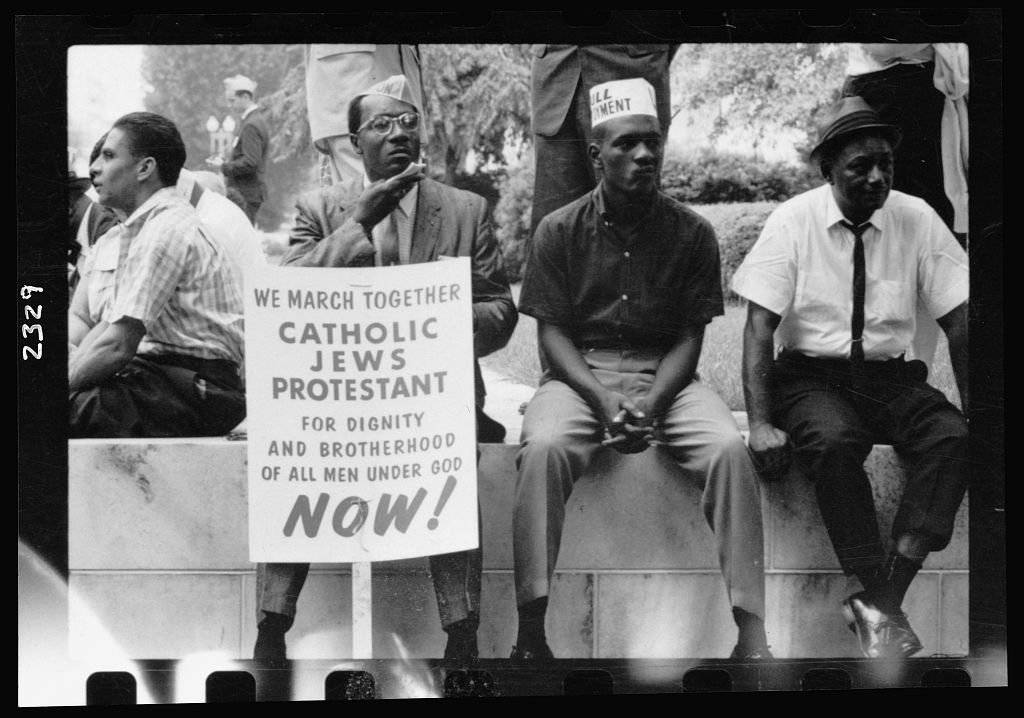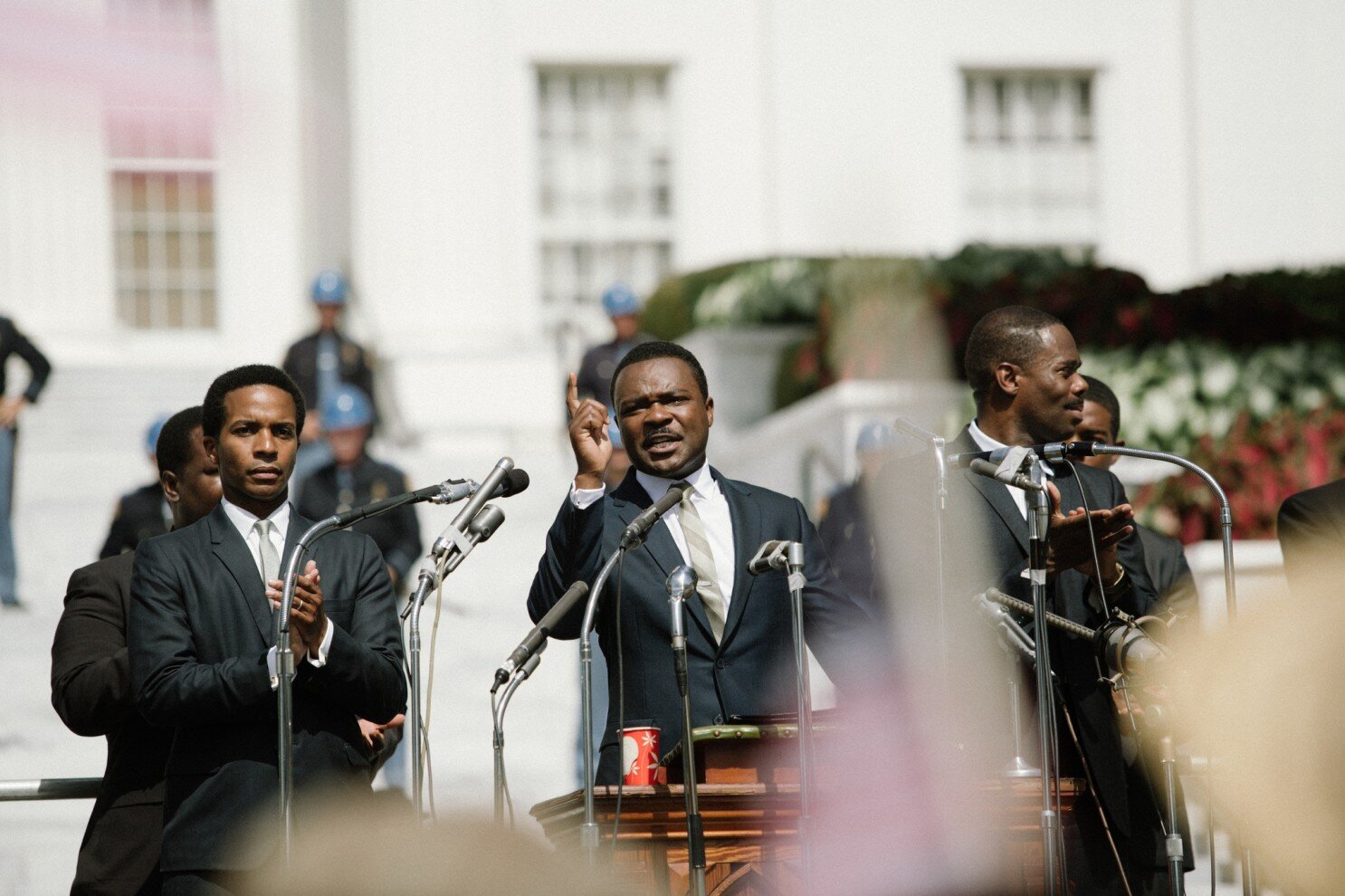Key themes
Equality vs. Equity
Objectives
- Describe and define the historical moments of the development of the Voting Rights Act
- Synthesize primary and secondary sources around the issue of voting in America
- Evaluate the current state of the Voting Rights Act
- Identify key differences between equity and equality
There are two activities in this lesson.
Key themes
Equality vs. Equity
Objectives
- Describe and define the historical moments of the development of the Voting Rights Act
- Synthesize primary and secondary sources around the issue of voting in America
- Evaluate the current state of the Voting Rights Act
- Identify key differences between equity and equality
There are two activities in this lesson.

LESSON ONE
Introduction
When thousands of women dressed in white marched down Washington D.C.’s Pennsylvania Avenue on March 3, 1913, their Suffragist rallying cry for equality was loud and clear, “Votes for Women.” While the 15th Amendment in 1870 gave Black men the right to vote, women, specifically White women, waited 50 more years for the same opportunity to cast their ballots. Most Black women in the U.S. would continue to fight decades for voting equity. While the 19th Amendment gave women the right to vote, Black women still had to contend with poll taxes and literacy tests that kept them and others in their families from exercising their right to vote in many states.
Journalist Tabbye Chavous expounds on the equity of the American vote when she writes, “Given the documented successes of the [Voting Rights Amendment], it is all the more troubling that the Supreme Court, in Shelby County v. Holder (2013) sharply limited the scope of the VRA, dismantling critical elements that had increased voting participation. This court decision also spurred the enactment of long-stalled state-level policies designed to suppress voter turnout and disenfranchise minoritized populations across the nation.”
So did the Voting Rights Act provide an equitable opportunity for all voters, or are Americans operating under the false pretense that equality and equity are the same?
LESSON ONE
Activity I.
Analyze Social Injustice Scenarios for Equality and Equity Outcomes
Procedure
Download and complete the student-led activity: Participants may complete the student activity either in groups or as a whole class. Additional links are provided for primary and secondary sources to help answer the questions.
After 20 minutes of working on this activity, click “PLAY” to view the answers. All participants should write the answers to all questions.
Procedure
Download and complete the student-led activity: Participants may complete the student activity either in groups or as a whole class. Additional links are provided for primary and secondary sources to help answer the questions.
After 20 minutes of working on this activity, click “PLAY” to view the answers. All participants should write the answers to all questions.
Discussion Questions
- How have voting rights evolved over the last 150 years?
- What is the current state of voting rights in America?
- Are there any current threats to voting in your community? State? Region?
- How can you become involved?
LESSON ONE
Activity II.
Determining Equality vs. Equity in Sample Present-Day Scenarios
Procedure
Read the two equality vs. equity scenarios below: Participants will be challenged to problem-solve an issue using the measurements of equity and equality. Each individual or group should prepare a short presentation about what informed the equal and equitable methods they chose for their scenario.
A neighborhood meeting has been planned to discuss the building of a new shopping mall in a community. The meeting will be held in English, however, approximately 25% of people in the community do not speak English as their first language. What are some examples of an equal way and then what are some examples of an equitable way to accommodate the meeting’s attendees so everyone will be able to understand and participate in the discussion? Which outcome best serves the community and why?
A severe health crisis has impacted a community and many people are not able to go to their jobs safely, therefore, individuals and families are forced to stay home. The local businesses in the community want elected state leaders to send a financial stipend to everyone living in the community in order to help cover their bills while they are out of work. However, not everyone is out of work and some people are able to continue working in their jobs from home. What are some examples of an equal way and then what are some examples of an equitable way to support the individuals and families who need financial support? Which outcome best serves the community and why?
Scenario A
A neighborhood meeting has been planned to discuss the building of a new shopping mall in a community. The meeting will be held in English, however, approximately 25% of people in the community do not speak English as their first language. What are some examples of an equal way and then what are some examples of an equitable way to accommodate the meeting’s attendees so everyone will be able to understand and participate in the discussion? Which outcome best serves the community and why?
Scenario B
A severe health crisis has impacted a community and many people are not able to go to their jobs safely, therefore, individuals and families are forced to stay home. The local businesses in the community want elected state leaders to send a financial stipend to everyone living in the community in order to help cover their bills while they are out of work. However, not everyone is out of work and some people are able to continue working in their jobs from home. What are some examples of an equal way and then what are some examples of an equitable way to support the individuals and families who need financial support? Which outcome best serves the community and why?
Discussion Questions
- How does your chosen equitable method address or dismiss the needs of the marginalized groups?
- How might your chosen equal method support or neglect the unique needs of certain community members?
- Take time to consider how each of your chosen methods might play out in reality. Would your equitable method truly help level the playing field? Why or why not?
- Name a current-day, real-world scenario where you could apply this test of equality vs. equity.






